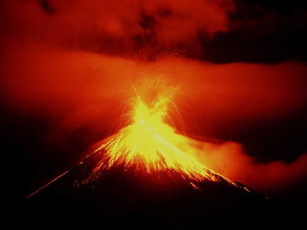Nature versus Man Number 3: Volcanic eruption of Thera and the end of the Minoan civilization
 This is part of a series which is intended to show that we are not necessarily the architecs of our future. Sometimes, unexpected events shape our history in ways that we cannot imagine.
This is part of a series which is intended to show that we are not necessarily the architecs of our future. Sometimes, unexpected events shape our history in ways that we cannot imagine.The Minoan civilization flourished in the island of Crete, and in adjacent islands, in the Aegean Sea from 2600 BCE to 1450 BCE. It was the most important culture of the Mediterranean Sea at the time of the Bronze Age. It was known basically for its achievements in commerce and naval expertise. In addition, many palaces and urban centers were constructed. The Minoans had an undescifered writing called Linear A, which later evolved into Linear B, which was adopted by the Myceneans who developed it into ancient Greek.
Between 1650 BCE and 1450 BCE, the largest volcanic eruption of the last 10000 years occurred in the island of Thera, modern Santorini. The eruption triggered tsunamis that probably destroyed the Minoan fleet and devastated the ports. The large amounts of ash that have been recovered probably obscured the sun for enough time to induce climatic changes. Considering that Crete is located 110 km (70 miles) from Thera, it is reasonable to believe that the impact of the eruption was catastrophic.
Ihe next thing we know is that the Myceneans, from mainland Greece, took over the archipelago civilization around 1420 BCE. Since it is not known the exact date of the eruption, the theories that explain the decline of the Minoan civilization are varied. We can easily hypothesize that the destruction of the fleet, essential for trade, together with climatic changes that collapsed the agriculture, could have led to famine, political instability and progressive weakness compared to the strength its neighbors. Furthermore, at that time, the Iron Age was taking over and the Minoans, due to the mentioned effects of the volcanic eruption, could not have coped with the technological advances of the time, thus, leaving them in disadvantage.
Nature sometimes works in ways we cannot predict.
Further reading
http://en.wikipedia.org/wiki/Minoan_Civilization
http://www.archaeology.org/online/news/minoan.html















1 Comments:
It is fascinating to learn how a natural disaster could have such a profound impact on an entire civilization.
Post a Comment
<< Home